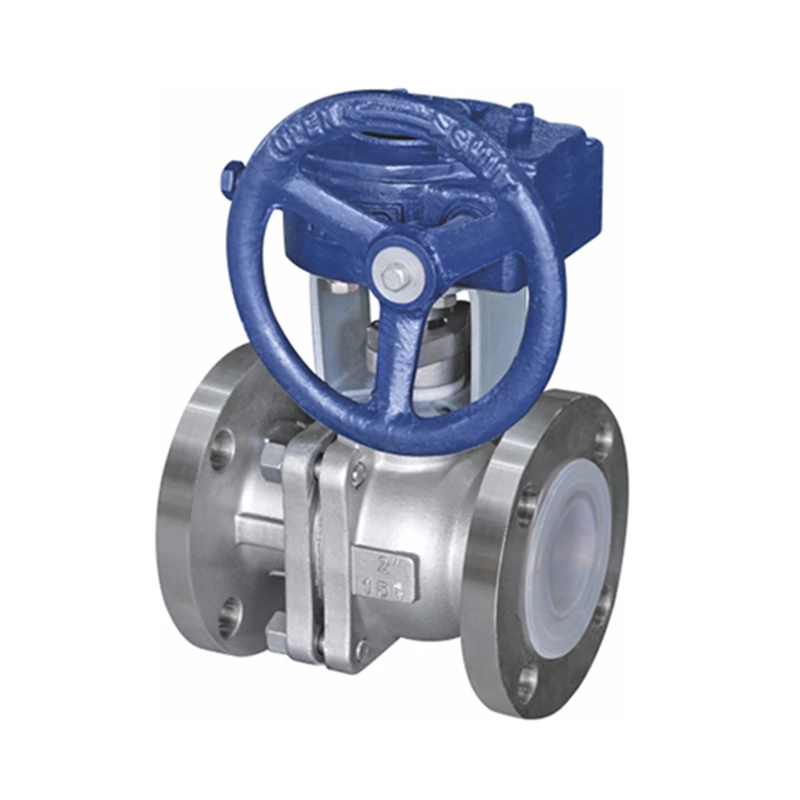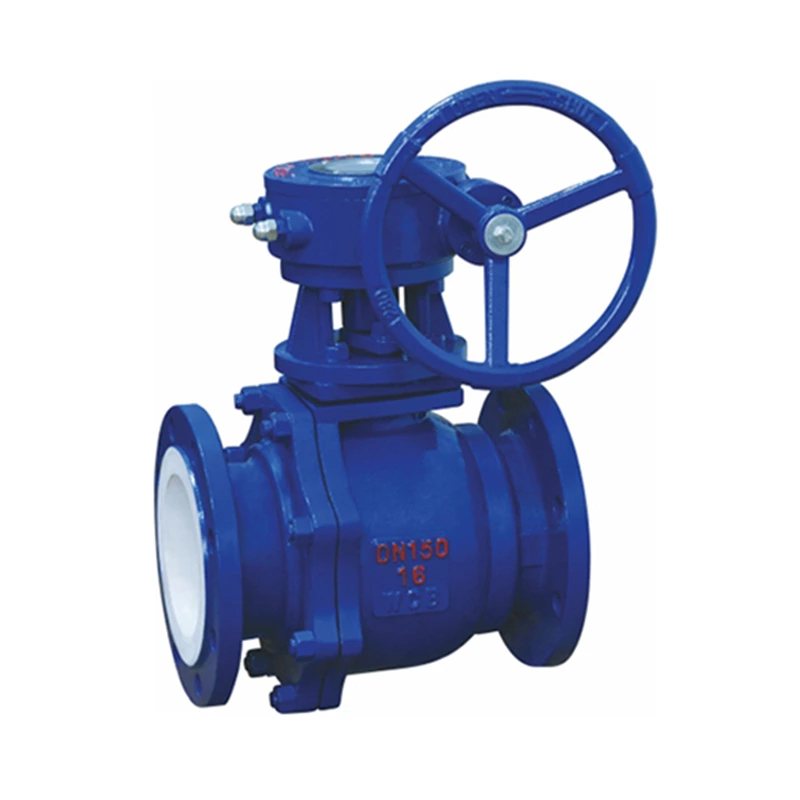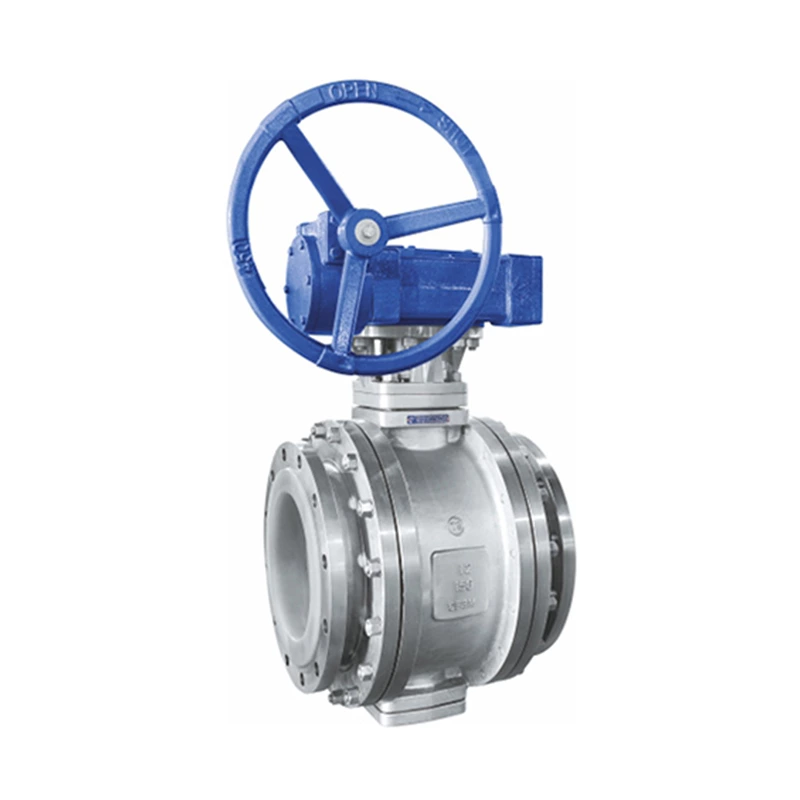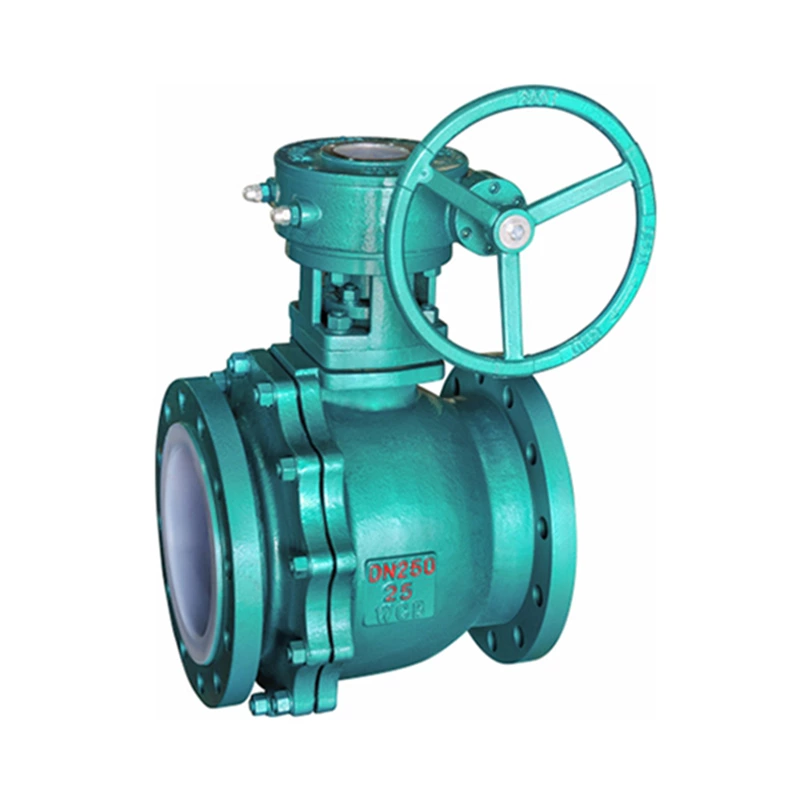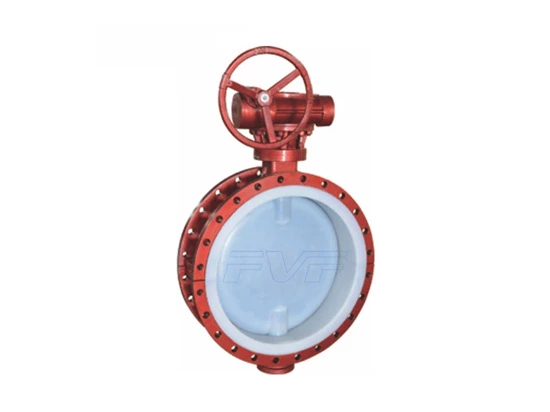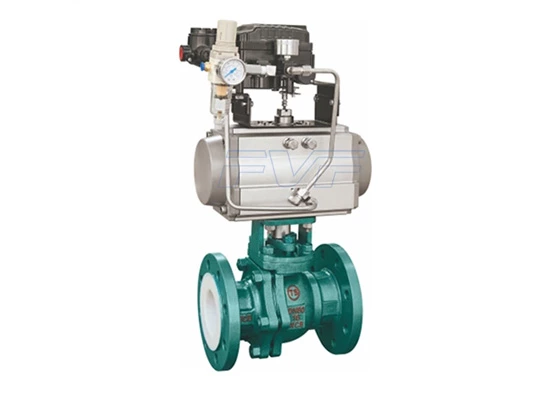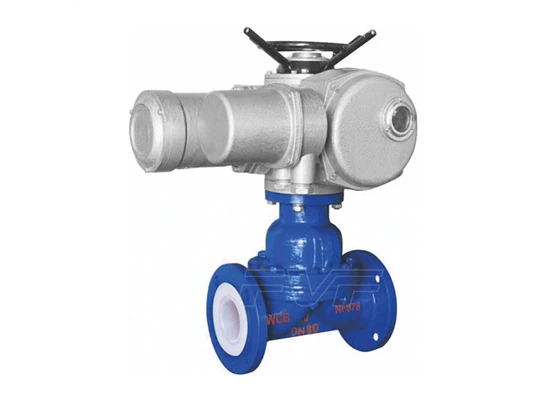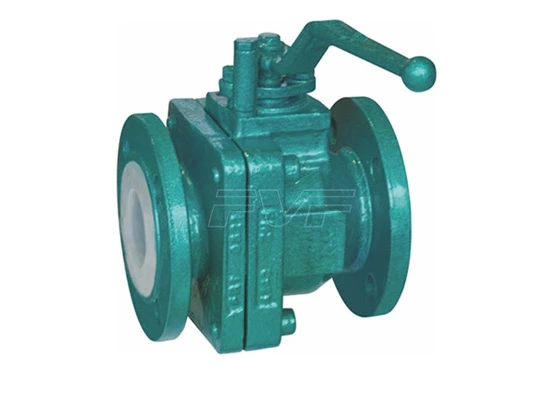Advantages And Disadvantages Of Fluorine-lined Stop Valves And Lining Materials
Basic overview:
Fluorine-lined stop valves are forced-seal valves, so when the valve is closed, pressure must be applied to the valve disc to force the sealing surface to not leak. When the medium enters the valve from below the valve disc, the resistance that the operating force needs to overcome is the friction between the valve stem and the packing and the thrust generated by the pressure of the medium. The force to close the valve is greater than the force to open the valve, so the diameter of the valve stem must be larger, otherwise the valve stem will bend. Since the emergence of self-sealing valves, the medium flow direction of the stop valve has changed to enter the valve cavity from above the valve disc. At this time, under the action of the medium pressure, the force to close the valve is small, while the force to open the valve is large, and the diameter of the valve stem can be reduced accordingly. At the same time, under the action of the medium, this type of valve is also more tight. my country's valve "three-in-one" has stipulated that the flow direction of the stop valve should be from top to bottom.
When the fluorine-lined stop valve is opened, when the opening height of the valve disc is 25% to 30% of the nominal diameter, the flow rate has reached the maximum, indicating that the valve has reached the fully open position. Therefore, the full open position of the stop valve should be determined by the stroke of the valve disc.
Advantages and disadvantages:
Lined Globe Valve has the following advantages:
Simple structure, easy to manufacture and maintain.
Small working stroke, short opening and closing time.
Good sealing, small friction between sealing surfaces, and long service life.
The disadvantages of fluorine-lined stop valves are as follows:
Large fluid resistance, large force required for opening and closing.
Not suitable for media with particles, high viscosity, and easy coking.
Poor adjustment performance.
The types of high-pressure stop valves are divided into external thread type and internal thread type according to the position of the valve stem thread. According to the flow direction of the medium, there are straight-through type, direct current type and angle type. According to the sealing form, the stop valve is divided into packing seal stop valve and bellows seal stop valve.
Lining material:
Polyperfluoroethylene FEP (F46)
Applicable media:
Any organic solvent or reagent, dilute or concentrated inorganic acid, alkali, ketone, aromatic hydrocarbon, chlorinated hydrocarbon, etc.
Operating temperature:
-85~150
Features: Mechanical, electrical properties and chemical stability are basically the same as F4, but the outstanding advantages are high dynamic toughness, weather resistance and radiation resistance.
Polytrifluoroethylene PCTEF (F3)
Applicable media:
Various organic solvents, inorganic corrosive liquids (oxidizing acids)
Operating temperature: -195~120
Features: Heat resistance, electrical properties and chemical stability are second only to F4, mechanical strength, creep performance, and hardness are better than F4
Polypropylene: RPP
Applicable media: Aqueous solutions of inorganic salts, dilute or concentrated solutions of inorganic acids and alkalis.
Operating temperature: -14~80
Features: One of the lightest plastics, its yield, tensile and compressive strength, and hardness are better than low-pressure polyethylene, with outstanding rigidity, good heat resistance, easy molding, and low cost. After modification, dynamic impact, fluidity, and bending elasticity.
Polyvinyl fluoride: Rigid) PVC
Applicable media: water-resistant, concentrated alkali, non-oxidizing acid, chain hydrocarbon, oil and ozone, etc.
Operating temperature: 0-55
Features: high mechanical strength, excellent chemical stability and dielectric properties, good oil resistance and aging resistance, easy to weld and bond, low price.
Polytetrafluoroethylene PTFE (F4)
Use medium: strong acid, strong alkali, strong oxidant, etc.
Operating temperature: -200~180
Features: It has excellent chemical stability, high heat resistance, cold resistance, low friction coefficient, and is a self-lubricating material, but has low mechanical properties, poor fluidity, and large thermal expansion.
Polyvinylidene fluoride PVDF (F2)
Use medium: resistant to most chemicals and solvents,
Operating temperature: -70~100
Features: The tensile strength and compression strength are better than F4, resistant to bending, weathering, radiation. Light resistance and aging, etc. The biggest feature is good toughness and easy molding.
Polyolefin: PO
Applicable media: various concentrations of acids, alkalis, salts and some organic solvents.
Operating temperature: -58~80
Features: It is the world's most ideal anti-corrosion material and has been widely used in large-scale rotational molding equipment and pipeline linings.
